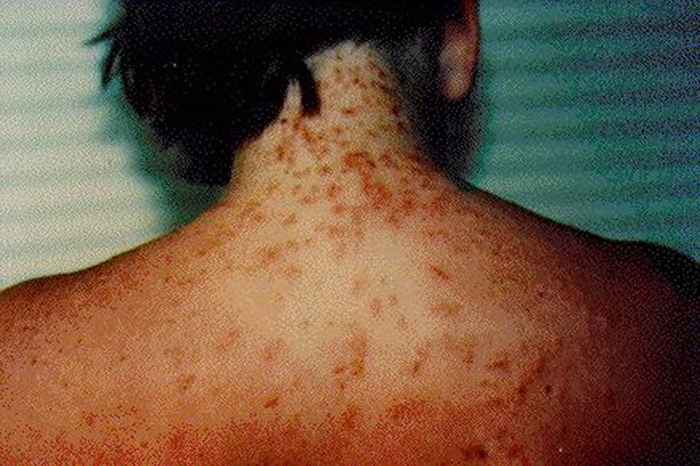Florida beaches are being adorned with purple flags to warn swimmers of an almost invisible hazard - an outbreak of "sea lice" in the warm summer waters. Although the creatures can't survive out of the water, they can sting bodies within - leaving victims with an itchy rash.
The name is not entirely accurate - the tiny creatures aren't actually sea lice at all, which are a type of crustacean that often (and only) parasitise marine fish, and are not dangerous to humans.
The Florida "sea lice" are something else entirely - the freshly hatched larvae of thimble jellyfish (Linuche unguiculata), which breed in the warming neotropical Atlantic waters of Spring and early Summer, with the larvae persisting as late as August.
"They aren't very intense, which is why we call them sea lice and not sea hornets or sea wasps," Dave Greenwood, the director of public safety for Pensacola Beach, told the Pensacola News Journal.
"It's just one of those you have to deal with when you go into the Gulf of Mexico. You are a land animal and the Gulf is not our native environment."
The larvae are difficult to see except under very good lighting, and look like small grains of black pepper. But, although they're small, they're not defenseless. They are still equipped with nematocysts, also known as stinging cells.
They generally leave exposed skin under the water alone; rather, the problem arises when they become trapped underneath fabric - such as a T-shirt or bathing suit.
 (Florida Department of Health)
(Florida Department of Health)
After the swimmer emerges from the water, changes such as evaporation or rinsing with freshwater can trigger the larvae to release their stinging cells. This triggers an allergic reaction, and washing in freshwater, continuing to wear the bathing suit and rubbing with a towel can make it worse, according to DermNet NZ.
So what can you do about it? Well, the Florida Department of Health recommends that you wear as little as possible when bathing in thimble jellyfish-infested waters. No T-shirts or long shorts, and two-piece swimsuits for women, rather than one-piece.
This necessitates extra diligence with sunscreen, of course.
DermNet NZ recommends that, if you think you have been exposed to the larvae, you should immediately remove your bathing suit and rinse your body in larvae-free seawater (which might be tricky in a public place) - rinsing with vinegar immediately is not recommended, since it can exacerbate the rash.
If you can't rinse in seawater, removing your bathing suit and taking a shower is the next best option. You should change into something clean, and not wear your bathing suit again until it has been detergent-washed and heat-dried, the Department of Health said.
This is because the larvae can remain in the bathing suit, and continue to discharge their nematocysts weeks after the initial exposure. If a person gets a severe reaction, they are even advised to discard their bathing suit.
If you do get a rash, an ice pack may relieve some of the pain, and you can treat it with topical antihistamine creams, adding an anti-inflammatory such as ibuprofen or aspirin to help reduce the pain further.
But if you're super worried, your best bet is to pay attention to those purple flags and find somewhere else to swim.
